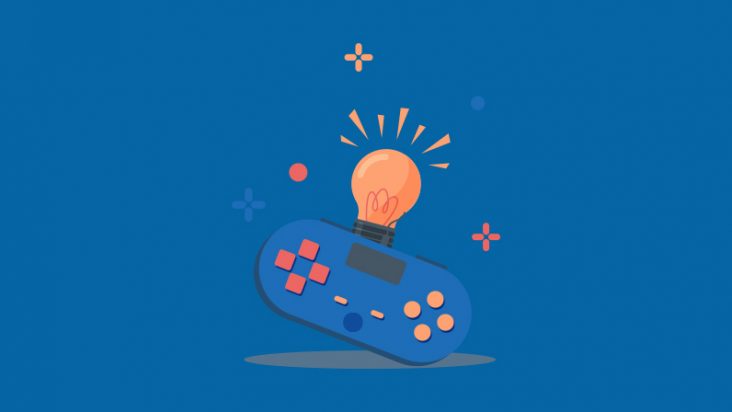The Impact of Indie Games on AAA Development

The gaming industry has undoubtedly become a significant sector in the modern world. In 2023, every person has the opportunity to play any game they like on their own computer while sitting at home and even create their own game if they wish, which can become a unique experience for millions of players worldwide. However, it wasn’t always this way.
After delving into the question of the impact of indie games on the AAA industry, I have studied numerous interesting materials and decided to write my own article on this captivating topic. In it, I will discuss the influence of indie games on the AAA industry, the importance of indie creativity for the gaming world, and players.
What are indie and AAA games?
In a nutshell, AAA games are referred to as the highest-budget projects released by major studios such as Electronic Arts (EA), Ubisoft, Activision Blizzard, Rockstar Games, Bethesda Game Studios, and many other well-known gaming studios. They are characterized by a high level of world-building, state-of-the-art graphics, and massive advertising budgets. However, the downside of this industry is that, like any large company, gaming giants are primarily driven by commercial success and perceive their activities through the prism of dollars, while indie development originally stemmed from the opposite, namely a unique idea. Often, indie developers only needed enthusiasm and a few energy drinks to create their unique game and capture the hearts of millions of players. Indie games do not have big budgets and connections for promotion, and the success of an indie game always rests on the shoulders of one or a few simple folks who decided to infuse some creativity into the gaming world.
The Story of Merger: Inspiration and Innovation
In the early 1980s, the video game industry faced challenging times, undergoing a crisis and teetering on the brink of extinction. However, against the backdrop of Nintendo and Sega success and the downfall of Atari, personal computers emerged as rising stars in the world of gaming. In 1983, the video game crash hit gaming consoles hardest as store shelves were inundated with cartridges, causing their prices to plummet.
In response, a community of enthusiast geeks began to form, taking up computers like the ZX81, VIC-20, and Acorn Atom, promising a bright future for the entertainment industry they were about to shape. These geeky squads were ready for action. During those times, playing new games on your machine was as simple as writing code following instructions from a magazine. If an error occurred, you had to wait a month for an update that could be copied. Often, players themselves found ways to solve problems.
The gaming industry itself was nurturing the next generation of creators, equipping them with programming knowledge, a desire to create new gaming experiences, and a passion for experimenting with the code they were provided. If major developers couldn’t create the
games players wanted, the players themselves took on the task. After all, as the saying goes, if you want a job done right, do it yourself.
One of the most significant games born during that era was Football Manager, created by a designer named Kevin Toms, who decided to blend his ideas for a tabletop football game with cutting-edge technology.
“The first computer I created Football Manager on was a Video Genie, which was a TRS80 clone,” Toms recalls. “The ZX81 was the second version, and essential to the future success of the game because of a much bigger UK market at the time.” Before long, Kevin Toms had created Football Manager—and with it, an entire video game genre from his bedroom.
During that time, the founders of Rare, Tim and Chris Stamper, were coding a small shooter game called Jetpac, which later won the “Game of the Year” award at the Golden Joysticks in 1983. These early independent developers sold their games by mail, as stores were not yet selling computer games.
“When I released Football Manager, it was in January 1982” says Kevin Toms, “and at that time, all game developers were independent. There were no publishers, so it was the only way—doing it yourself. In fact, there weren’t even stores selling games initially. So, the only way to find your customer was to advertise in magazines and sell by mail, and that’s what I and others did at the time.“
Of course, this couldn’t continue indefinitely. Sensing the money in this niche, distributors began to take notice of the young computer geniuses creating a popular underground gaming scene.
It can be said that indie games didn’t just become another offspring of the gaming industry; they literally saved it from collapse and breathed new life into the big game development, creating a unique gaming experience and inspiring AAA studios and other young developers who continue this work to this day.
Influence on AAA Studio Game Mechanics
We already know that for industry giants, commercial success of a game is the top priority, but this success doesn’t come out of thin air; it arises from trends. Trends that are often created by indie games.
Take, for example, Arma 2. One day, a guy playing it thought that the gameplay was too drawn-out, lacking action and motivation for action. So, he decided to create a modification where the playable area constantly shrinks, leaving players with less and less space for safe movement. The mod became very popular among players and eventually evolved into a standalone game.
Now, that guy’s nickname is PlayerUnknown, and the game his mod transformed into is Playerunknown’s Battlegrounds (or simply PUBG). The game had a profound impact on the industry. Nearly all online shooters introduced a “Battle Royale” mode, where the play area contracts, forcing players into inevitable showdowns—games like Fortnite, Apex, CS:GO, Call of Duty, Battlefield, and even World of Tanks and many other well-known titles borrowed the gameplay mode from PUBG.
Currently, PUBG ranks as the third best-selling game of all time. Thus, a person who initially had little to do with the gaming industry managed to elevate it to a new level and completely change gaming trends.
So, what do indie games offer that big studio games don’t? After all, it might seem that they know everything about game development and should understand better than anyone what people want to play.
The answer lies in what indie developers primarily aim to achieve: creating a good, interesting game that surprises players, shows them something they haven’t seen before, and only then making money. It’s no secret that the vast majority of indie developers earn little, if anything at all. However, it’s precisely this approach that gifts us with iconic masterpieces like Minecraft or Angry Birds.
The Future of the Gaming Industry: A Symbiosis Between Indie and Big Game Development

The future of the video game development industry promises to be captivating and dynamic. I’d like to highlight some of the most promising directions for industry development, as well as significant opportunities for indie game development, as technology advances bring about new possibilities. Here are a few key points:
- Virtual and Augmented Reality Advancements: Virtual and augmented reality technologies continue to evolve, opening up new prospects for future games. Both indie developers and AAA studios will explore this segment of the market and undoubtedly delight us with new projects utilizing these mechanics.
- Artificial Intelligence and Machine Learning: The use of artificial intelligence in games is on the rise. This can lead to more realistic and adaptive game worlds, as well as improvements and simplifications in the development process—a particularly good piece of news for smaller studios.
- Cloud Technologies: Leveraging cloud computing will enable the creation of larger and more accessible online games. This will make game development and deployment more accessible to smaller studios.
Of course, large studios will never exclusively cater to player preferences because it’s simply not in their best interest. Fortunately, we have such a powerful tool in the form of indie developers, and the trends they create will never go unnoticed by AAA games. This means that monotony will always be enriched by something unique, thanks to our gaming enthusiasts armed with energy drinks.







